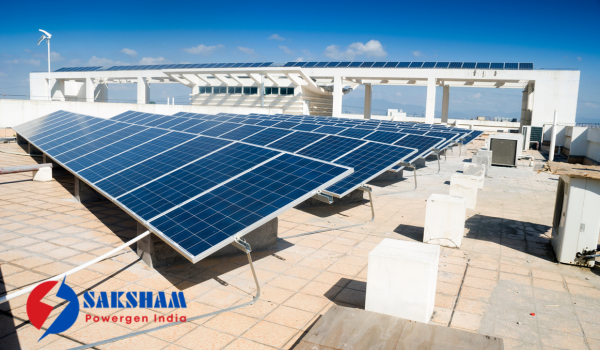Maharashtra Raises Net Metering Cap for Rooftop Solar Projects to 5 MW: A Boost for Solar Energy Adoption
In a significant move towards promoting renewable energy, Maharashtra has recently raised the net metering cap for rooftop solar projects to 5 megawatts (MW). This policy change marks a major step forward in the state’s efforts to accelerate the adoption of solar energy, making it easier for businesses, institutions, and residential complexes to invest in larger solar power systems. The new cap is expected to spur growth in the rooftop solar sector, contributing to Maharashtra’s goal of achieving a sustainable and clean energy future.
MERC
8/21/20243 min read


What is Net Metering?
Net metering is a billing mechanism that allows solar energy users to feed the excess electricity generated by their solar panels back into the grid. In return, they receive credits on their electricity bill. This system not only reduces energy costs but also encourages the adoption of solar power by making it more economically viable. Net metering effectively turns solar energy users into prosumers—both producers and consumers of electricity—enabling them to significantly offset their energy bills.
The Previous Cap and Its Limitations...
Before this policy change, the net metering cap in Maharashtra was limited to 1 MW. While this cap was sufficient for small-scale residential and commercial installations, it posed challenges for larger entities, such as industrial units, educational institutions, and housing societies, that required more extensive solar power systems to meet their energy needs. The previous limit restricted these larger consumers from fully capitalizing on the benefits of net metering, often forcing them to rely on alternative, less efficient energy management strategies.
The New 5 MW Cap: What It Means?
The increase in the net metering cap to 5 MW is a game-changer for the solar energy landscape in Maharashtra. Here’s how:
Encouragement for Larger Installations: With the new cap, larger commercial and industrial consumers can now install solar systems that better match their energy consumption patterns. This not only allows them to maximize their energy savings but also reduces their dependence on grid electricity, leading to substantial cost savings over time.
Increased Return on Investment: By allowing larger solar installations to benefit from net metering, the return on investment (ROI) for these projects becomes more attractive. Organizations can now generate more solar power, export excess energy to the grid, and receive credits that offset their future electricity costs. This enhanced financial incentive is likely to drive more businesses and institutions to invest in solar energy.
Boost to the Rooftop Solar Sector: The new policy is expected to provide a significant boost to the rooftop solar sector in Maharashtra. As more entities explore the benefits of larger solar installations, the demand for solar panels, inverters, and related infrastructure is likely to increase, creating more business opportunities within the renewable energy industry.
Contribution to Renewable Energy Goals: Maharashtra has set ambitious targets for renewable energy as part of its broader strategy to combat climate change and reduce carbon emissions. By raising the net metering cap, the state is facilitating the adoption of solar energy, which will play a crucial role in meeting these targets. The policy change is aligned with both national and global efforts to transition towards cleaner, more sustainable energy sources.
Empowerment of Consumers: The policy empowers consumers by giving them greater control over their energy production and consumption. With the ability to install larger solar systems and benefit from net metering, consumers are better positioned to manage their energy costs, contribute to environmental sustainability, and enhance their energy independence.
Challenges and Considerations...
While the increase in the net metering cap is a positive development, there are still challenges that need to be addressed to fully realize the potential of this policy. These include:
Grid Stability: As more large-scale solar installations connect to the grid, managing grid stability becomes crucial. Utilities and regulators must work together to ensure that the grid can handle the increased influx of solar power without compromising reliability.
Awareness and Education: To maximize the impact of the new policy, it is important to raise awareness among potential solar adopters about the benefits of larger installations and net metering. Education campaigns and workshops can help businesses and institutions understand how to optimize their solar investments.
Streamlined Approvals: The process for obtaining approvals for solar installations, particularly larger projects, needs to be streamlined to avoid delays and encourage faster adoption.


